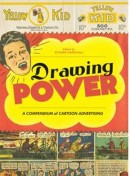 Drawing Power
Drawing Power by Rick Marschall and Warren Bernard (November 24)
by Rick Marschall and Warren Bernard (November 24)
In what promises to be one of the season’s more aesthetically pleasing books, Drawing Power collects mass market print advertisements from the 1890s to the recent past, including ads starring Mickey Mouse and Little Orphan Annie and ads drawn by Dr. Seuss and Rube Goldberg.
There’s a Road to Everywhere Except Where You Came From by Bryan Charles (October 5)
by Bryan Charles (October 5)
A memoir by the author of Grab On to Me Tightly as if I Knew the Way , and a friend of The Second Pass, about coming to New York City from the Midwest, living in a rapidly changing Brooklyn, developing as a writer, and finding a fateful day job in the World Trade Center.
, and a friend of The Second Pass, about coming to New York City from the Midwest, living in a rapidly changing Brooklyn, developing as a writer, and finding a fateful day job in the World Trade Center.
Bob Dylan In America by Sean Wilentz (September 7)
by Sean Wilentz (September 7)
A notable historian considers the musical icon’s influences, craft, and impact in “a unique blend of fact, interpretation, and affinity.”
On Balance by Adam Phillips (August 31)
by Adam Phillips (August 31)
A new collection of essays about human psychology (these focusing on “the paradoxes inherent in our appetites and fears”) by the writer and analyst who John Banville called, “One of the finest prose stylists at work in the language, an Emerson of our time.”
Cultures of War by John Dower (September 7)
by John Dower (September 7)
Historian Dower follows up Embracing Defeat: Japan in the Wake of World War II , which won both the National Book Award and the Pulitzer Prize, with a look at the culture of war reflected in four events: Pearl Harbor, Hiroshima, 9/11, and the invasion of Iraq.
, which won both the National Book Award and the Pulitzer Prize, with a look at the culture of war reflected in four events: Pearl Harbor, Hiroshima, 9/11, and the invasion of Iraq.
Travels in Siberia by Ian Frazier (October 12)
by Ian Frazier (October 12)
Two excerpts from Frazier’s travelogue appeared in The New Yorker a few months ago. From the publisher: “The book brims with Mongols, half-crazed Orthodox archpriests, fur seekers, ambassadors of the czar bound for Peking, tea caravans, German scientists, American prospectors, intrepid English nurses, and prisoners and exiles of every kind.”
Mourning Diary by Roland Barthes (October 12)
by Roland Barthes (October 12)
Beginning the night after his mother died, Barthes wrote a series of 330 brief note cards detailing his own grief and the idea of grief more generally. This volume collects them.
The Emperor of All Maladies by Siddhartha Mukherjee (November 16)
by Siddhartha Mukherjee (November 16)
A renowned oncologist’s sprawling history of cancer, from its centuries-long history to the current-day search for a cure. My guess is that this is in the vein of Andrew Solomon’s book about depression, The Noonday Demon .
.
Titanic Thompson: The Man Who Bet on Everything by Kevin Cook (November 22)
by Kevin Cook (November 22)
A biography of the road gambler who was Damon Runyon’s model for Sky Masterson in Guys and Dolls. A terrific golfer, Thompson was also a five-time murderer, five-time groom, and someone who ran across Houdini, Al Capone, and Minnesota Fats, among others.
Between Religion and Rationality by Joseph Frank (July 26)
by Joseph Frank (July 26)
A collection of essays by the esteemed Dostoevsky biographer. Here, he writes more about Dostoevsky, and about the tension in Russian literature (and wider culture) between reason and faith. The publisher claims the book “[offers] insights for general readers and experts alike,” though it arrives with the expert cover price of $60.
How I Killed Pluto and Why It Had It Coming by Mike Brown (December 7)
by Mike Brown (December 7)
The astronomer who discovered the celestial body that knocked Pluto off the planet list tells his story.
Running the Books by Avi Steinberg (October 19)
by Avi Steinberg (October 19)
A memoir about Steinberg’s time running a library in a tough Boston prison.
A Week at the Airport by Alain de Botton (September 21)
by Alain de Botton (September 21)
De Botton spent a week at Heathrow Airport as writer-in-residence. This illustrated book recounts his experience of “a place that most of us never slow down enough to see clearly.”
Exiles in Eden by Paul Reyes (August 31)
by Paul Reyes (August 31)
Journalist Reyes details the foreclosure crisis from a personal perspective, working with his father’s company, which empties out foreclosed homes in Florida.
How to Become a Scandal by Laura Kipnis (August 31)
by Laura Kipnis (August 31)
In her heavily blurbed new book (15 of them on Amazon at the moment), Kipnis (Against Love) writes about four particular scandals to examine why Americans love to watch — and act out — psychodramas.
A Life Like Other People’s by Alan Bennett (September 14)
by Alan Bennett (September 14)
The prize-winning playwright’s latest work of memoir details his parents’ marriage and the lives of two of his aunts.
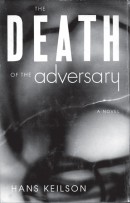 Francine Prose praises the genius of Hans Keilson as seen in two short novels, one of them translated into English for the first time: “Although the novels are quite different, both are set in Nazi-occupied Europe and display their author’s eye for perfectly illustrative yet wholly unexpected incident and detail, as well as his talent for storytelling and his extraordinarily subtle and penetrating understanding of human nature.” . . . Michelle Goldberg recommends a new book about the religious lives of nine people in India. (“No single volume could do justice to India’s lush religious diversity, but I have never read one that encompasses more of it, or that penetrates deeper, than William Dalrymple’s luminous new book.”) . . . John Self reviews Tom McCarthy’s C, which will be published in the U.S. next month. (“It has everything that might appeal to certain literary prize juries: it’s stuffed with cannily-drawn characters, historical verisimilitude, and normally big subjects like war and death. Is that enough?”) . . . Tessa Hadley praises a debut novel just published in Britain, in which a disable young girl’s interior world makes up for her severely limited speech. Hadley writes that the book’s “conceit is ingenious, and it works.” . . . Paul Di Filippo reviews Mary Roach’s “often hilarious, yet journalistically and scientifically sound new book” about space travel, and compares its findings to the Mars-set science fiction of Joe Haldeman.
Francine Prose praises the genius of Hans Keilson as seen in two short novels, one of them translated into English for the first time: “Although the novels are quite different, both are set in Nazi-occupied Europe and display their author’s eye for perfectly illustrative yet wholly unexpected incident and detail, as well as his talent for storytelling and his extraordinarily subtle and penetrating understanding of human nature.” . . . Michelle Goldberg recommends a new book about the religious lives of nine people in India. (“No single volume could do justice to India’s lush religious diversity, but I have never read one that encompasses more of it, or that penetrates deeper, than William Dalrymple’s luminous new book.”) . . . John Self reviews Tom McCarthy’s C, which will be published in the U.S. next month. (“It has everything that might appeal to certain literary prize juries: it’s stuffed with cannily-drawn characters, historical verisimilitude, and normally big subjects like war and death. Is that enough?”) . . . Tessa Hadley praises a debut novel just published in Britain, in which a disable young girl’s interior world makes up for her severely limited speech. Hadley writes that the book’s “conceit is ingenious, and it works.” . . . Paul Di Filippo reviews Mary Roach’s “often hilarious, yet journalistically and scientifically sound new book” about space travel, and compares its findings to the Mars-set science fiction of Joe Haldeman.
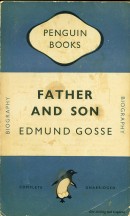 From
From 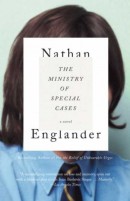 Jimmy Chen at HTML Giant has been tracking trends in the book cover industry: covers with
Jimmy Chen at HTML Giant has been tracking trends in the book cover industry: covers with  Juliet Waters has a great idea. Like many of us, she’s tired (to the point of collapse) of Jane Austen vs.
Juliet Waters has a great idea. Like many of us, she’s tired (to the point of collapse) of Jane Austen vs. 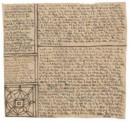 There are things I keep promising to do, two of which jump out at me: Review Reality Hunger (which will happen, and soon), and read Robert Walser. The latter might have to wait a little while longer, but that didn’t keep my from enjoying
There are things I keep promising to do, two of which jump out at me: Review Reality Hunger (which will happen, and soon), and read Robert Walser. The latter might have to wait a little while longer, but that didn’t keep my from enjoying  Welcome to the first book giveaway on The Second Pass. It’s a tradition on other sites, and I hope I can do more of it in the future. This initial offering is the Penguin Classics edition of Thomas Pynchon’s Gravity’s Rainbow. A lovely book, it can be yours for nothing at all. Just send an e-mail to john[at]thesecondpass[dot]com, with Pynchon in the subject line. If you’d like to add a brief note, telling me how much you like the site, or a way you think it could be improved, or who you think will win the National League’s central division this year, I would love that. No mailing address necessary — I’ll contact the winner for that. Winner will be determined by random drawing. I’ll accept entries until 11:59 p.m. on Sunday, August 8th.
Welcome to the first book giveaway on The Second Pass. It’s a tradition on other sites, and I hope I can do more of it in the future. This initial offering is the Penguin Classics edition of Thomas Pynchon’s Gravity’s Rainbow. A lovely book, it can be yours for nothing at all. Just send an e-mail to john[at]thesecondpass[dot]com, with Pynchon in the subject line. If you’d like to add a brief note, telling me how much you like the site, or a way you think it could be improved, or who you think will win the National League’s central division this year, I would love that. No mailing address necessary — I’ll contact the winner for that. Winner will be determined by random drawing. I’ll accept entries until 11:59 p.m. on Sunday, August 8th.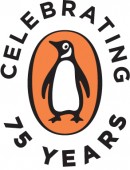 Last Friday marked the 75th anniversary of Penguin Books. Now a worldwide publisher of diverse titles in diverse formats, the press started in Britain as the brainchild of Allen Lane. As Phil Baines writes in the beautiful
Last Friday marked the 75th anniversary of Penguin Books. Now a worldwide publisher of diverse titles in diverse formats, the press started in Britain as the brainchild of Allen Lane. As Phil Baines writes in the beautiful 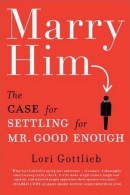 Diane Johnson
Diane Johnson 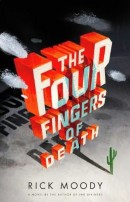 Rick Moody’s kitschy latest is built around a 600-page sci-fi novel within a novel. Sam Sacks
Rick Moody’s kitschy latest is built around a 600-page sci-fi novel within a novel. Sam Sacks  Andrew Seal
Andrew Seal 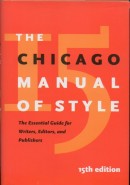 Mary E. Laur, an editor at the University of Chicago Press and part of the team that puts together new editions of The Chicago Manual of Style,
Mary E. Laur, an editor at the University of Chicago Press and part of the team that puts together new editions of The Chicago Manual of Style,  Woody Allen was recently convinced to record audiobooks for his four collections of humorous essays. Between this, Andrew Wylie’s
Woody Allen was recently convinced to record audiobooks for his four collections of humorous essays. Between this, Andrew Wylie’s 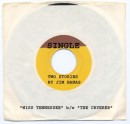 In what he is calling “The Summer of (Free) E-book Love,” Jim Hanas
In what he is calling “The Summer of (Free) E-book Love,” Jim Hanas 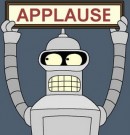 In his book
In his book 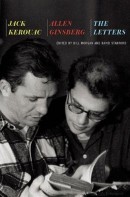 Robert Faggen says that
Robert Faggen says that 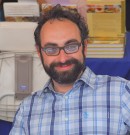 Yevgeniya Traps’ review of Gary Shteyngart’s third novel, Super Sad True Love Story, just went up in the Circulating section. Shteyngart made two prominent appearances in Sunday’s New York Times. He lightened up Deborah Solomon in
Yevgeniya Traps’ review of Gary Shteyngart’s third novel, Super Sad True Love Story, just went up in the Circulating section. Shteyngart made two prominent appearances in Sunday’s New York Times. He lightened up Deborah Solomon in 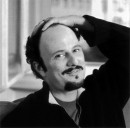 FSG has launched
FSG has launched 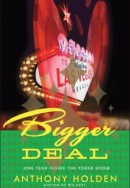 I recently finished Anthony Holden’s
I recently finished Anthony Holden’s  Anis Shivani
Anis Shivani 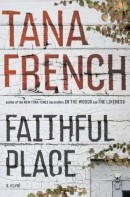 Laura Miller
Laura Miller 
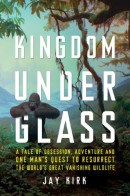
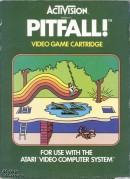 At Powell’s, Tom Bissell has a smart piece about the influence of video games on children, and
At Powell’s, Tom Bissell has a smart piece about the influence of video games on children, and 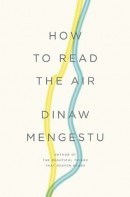
 Rachel Cooke writes smartly, at length,
Rachel Cooke writes smartly, at length, 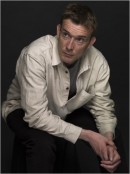 In last weekend’s New York Times Magazine,
In last weekend’s New York Times Magazine, 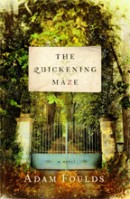 Ron Charles
Ron Charles 